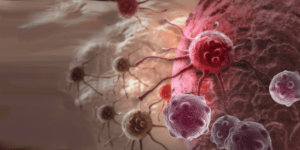
Diagnosed with Cancer? Your two greatest challenges are understanding cancer and understanding possible side effects from chemo and radiation. Knowledge is Power!
Learn about conventional, complementary, and integrative therapies.
Dealing with treatment side effects? Learn about evidence-based therapies to alleviate your symptoms.
Click the orange button to the right to learn more.
- You are here:
- Home »
- Blog »
- Newly Diagnosed »
- Umbilical Cord Blood, allogeneic, autologous hematopoietic stem cell transplants
Umbilical Cord Blood, allogeneic, autologous hematopoietic stem cell transplants
Autologous, allogeneic and cord blood stem cell transplants are an aggressive conventional therapy for blood cancers. All forms of bone marrow transplants have risks and benefits. The key for cancer patients and caregivers is to understand those risks and benefits.
Stem cell transplants can both save lives and cost lives. This aggressive therapy is that powerful. I underwent an autologous stem cell transplant in 12/95 for my rare blood cancer. I, along with many fellow cancer survivor live with the long-term and late stage side effects of this procedure.
The specific type of cancer, stage at diagnosis and your current symptoms can tell you a lot about which type of stem cell transplant can provide you with a specific risk/reward scenario.
Each cancer center, each hospital has its own transplant experience and therefore will have higher or lower success rates.
While the two articles linked and excerpted below focus on cord blood transplants, your job is to weigh the pros and cons of all types of transplants and how they can apply to your specific therapy.
If you are considering a stem cell transplant for yourself or a loved one, please scroll down the page, post a question or comment and I will reply to you ASAP.
Hang in there,
David Emerson
- Cancer Survivor
- Cancer Coach
- Director PeopleBeatingCancer
Recommended Reading:
- HyperBaric Oxygen Therapy (HBOT) as Cancer Therapy
- Child As Hematopoietic Stem Cell Donor-Ethical Considerations?
- Stem Cell Transplantation- Side Effects, GvHD, Complications and Overall Survival
Umbilical Cord Draws Focus From More Scientists Seeking Cures
“Transplants using the stem-cell-rich blood have already become lifesaving treatments for certain cancers and disorders of the blood, but these studies focus on a wider range of conditions…Cord blood is found in the placenta and umbilical cord of newborns, and contains stem cells, general-purpose cells that can proliferate and generate more specialized cells…
Cord-blood transplants replenish the hematopoietic stem cells that are destroyed by chemotherapy and radiation given to people with certain leukemias, lymphomas and other diseases. More than 30,000 cord-blood transplants have been performed since the first reported procedure in 1988…Cord blood doesn’t need to be as exact a match as bone marrow, making it easier for unrelated donors and recipients…
Graft-versus-host disease (GVHD) is a horrible side effect of allogeneic bone marrow transplantation. According to the article below as many as 22% of pediatric patients die of “treatment-related death” within one year.
One Unit Better Than Two for Cord Blood Transplant in Kids
“The risk for graft-versus-host disease (GVHD) appears to be lower in pediatric patients undergoing transplantation for hematologic cancer who receive one rather than two units of cord blood, according to results of a randomized trial...
There was no difference in survival, the primary end point, but the data suggested that a single unit may be sufficient and perhaps preferable in children, although most adults require two units to reach an adequate cell dose…
…several other outcomes evaluated over the course of follow-up favored the single-unit dose.
- grade III or IV acute GVHD was lower in children who received the single unit (13% vs. 23%; P=0.02)
- platelet recovery appeared to occur more quickly (58 vs. 84 days).
- the rate of neutrophil recovery was almost identical (88% vs. 89%).
- disease-free survival at one year was 70% among those receiving a single unit and 64% in those receiving two units (P=0.11).
- the rates of relapse at one year (12% vs. 14%)
- treatment-related death (19% vs. 22%) were also similar for the one- and two-unit doses, respectively.


